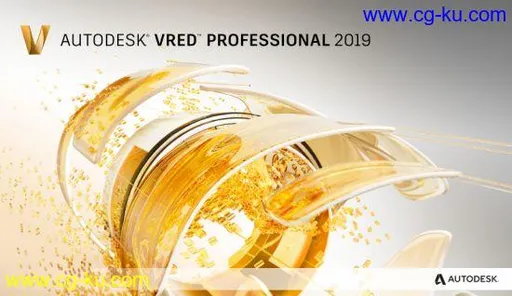Autodesk Vred Pro 2019是由欧特克推出的一款实用三维可视化和虚拟样软件,软件主要适用于专业的汽车设计师以及数字营销用户使用,拥有强大的产品渲染、设计审阅以及虚拟样机等功能,支持在渲染层模块中设置材质覆盖,新版本还增强了对HMD的支持,除此之外,还提高了产品的渲染速度.
x64 | Language:English | File Size: 1.95 GB
Description:
Autodesk Vred Products is one of the most popular and most widely used software in the design, specialized engineering company Autodesk is widely used in the visualization of 3D, modeling and detailed design of the product. This application is especially manufacturers of transport such as cars, motorcycles, helicopters and more.
The ability to combine the models with models with software such as 3Ds max, MAYA and built-in software that can model the software design ready for you in this app combine your samples. Engineers and designers can use this special software for prototyping and three-dimensional visualization products, especially their use. The software update feature that can be media editor, optimize and improve the script, promoting, improve FileIO and so on.
System Requirements:
OS:
-Microsoft® Windows® 10 (64-bit)
-Microsoft Windows 8.1 Professional (64-bit)
-Microsoft Windows 7 (64-Bit) SP1 or higher
CPU:64-bit Intel® processor with Intel® EM64T-capable or AMD® Athlon 64®, AMD Opteron® processor
Memory:1 GB RAM, 8 GB or more recommended
Whats New:
Features:
-Collaboration: 3D speech communication has been integrated into the Collaboration module
-FileIO: Alias Switch Materials are now supported
-General: Varjo HMD is now supported
-Materials: Substance materials are now supported
-Raytracing: Deep-learning-based Optix Denoiser is now supported
-Rendering: Transparent Cutouts are now supported
Improvements:
-Cluster: The environment variable "VRED_SERVICE_PAGE" was added to set up the cluster service web interface
-Rendering: The range of photometric parameters now match that of the non-photometric mode
-Scripting: An optional parameter was added to "findNode" to restrict its search to a given sub-tree
-StarVR: Automatic detection of the active StarVR SDK was added
Bugfixes:
-Cluster: Fixed background color with Export Alpha Channel and Premultiply Alpha activated
-Cluster: Improved navigation responsiveness when waking up the RT Cluster from Antialiasing
-Collision Detection: Box colliders rotate as expected
-FileIO: Constant Radius Blend surfaces appear as expected during conversion of a CATIA file
-FileIO: Fixed parsing of PLMXML files leading to lower memory consumption
-General: Fixes changing UV's on selected geometries during Shadow baking with subdivision enabled
-General: Variant sets are no longer missing after closing the "Data collection and use" dialog
-Geometry Editor: Fixed crash when using "Calculate Normals" in Raytracing for geos with anisotropic or displaced material
-Localization: Added missing translation for "Quick Actions" at the top menu area in the Material Editor
-Measurements: Unwanted wireframe object no longer appear when using point to object measurements
-Navigation: When setting a new pivot point with active collision detection, Trackball navigation is smooth
-OpenGL: Parallax Mapping artefacts have been fixed (Bump Type "Bump Mapping" with Parallax Intensity > 0)
-Raytracing: Artefacts no longer appear on object edges when using the illuminance tonemapper
-Raytracing: Environment light source intensity acts as expected when photometric parameters are active
-Raytracing: IES Profiles for spherical lights are supported in raytracing
-Raytracing: Transparency appears as expected for raytraced see-through colors
-Raytracing: Using a spectrum in RGB raytracing mode provides the correct area light color
-Rendering: Activating Use Light Profile without an IES light profile loaded works as expected
-Rendering: Exported PSB files can be opened in Photoshop
-Rendering: Fixed crash when using Subsurface scattering with Textured lights
-Rendering: IES lights in Photometric parameter mode provide the expected rendered result.
-Rendering: Images appear as expected when rendering animations in .hdr format
-Rendering: Luminance and illuminance rendering occur as expected when photometric parameters are off
-Rendering: Rendering HDR environments with very high dynamic ranges now provides the expected results
-Rendering: The correct intensities are supplied when Export to TIFF/PSD in HDR is enabled with Photometric Parameters
-Rendering: When using 16-bit bump maps, materials reflections no longer display banding artefacts
-Scripting: Reopen a Catia Product file using "load()" without issues
-UI: After undoing a deleted camera, the camera reappears in the Scene Graph
-UI: Opaque Distance and Transparent Distance tooltips have been corrected
-UI: The correct tooltips appear for avatar fading distance settings

发布日期: 2019-01-22